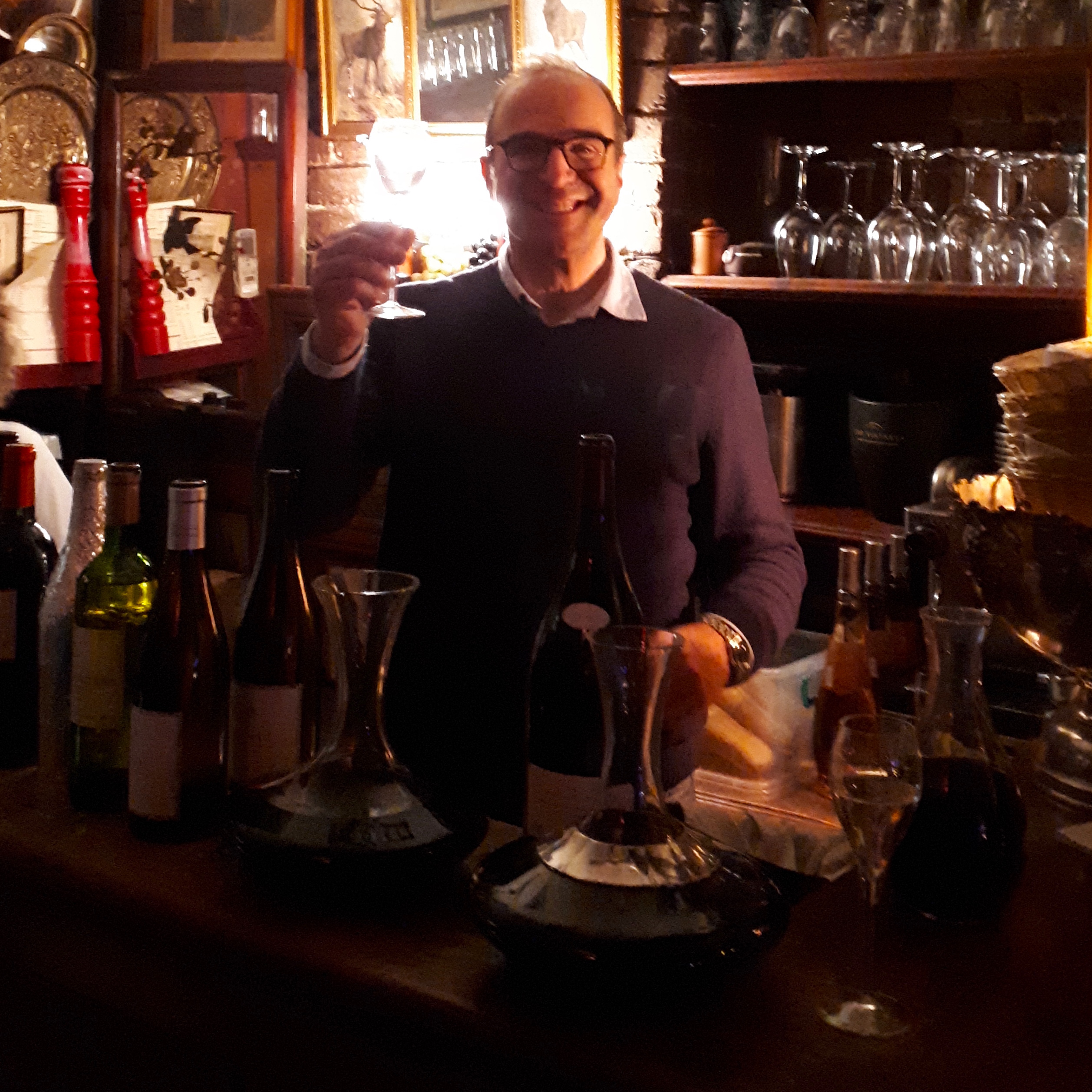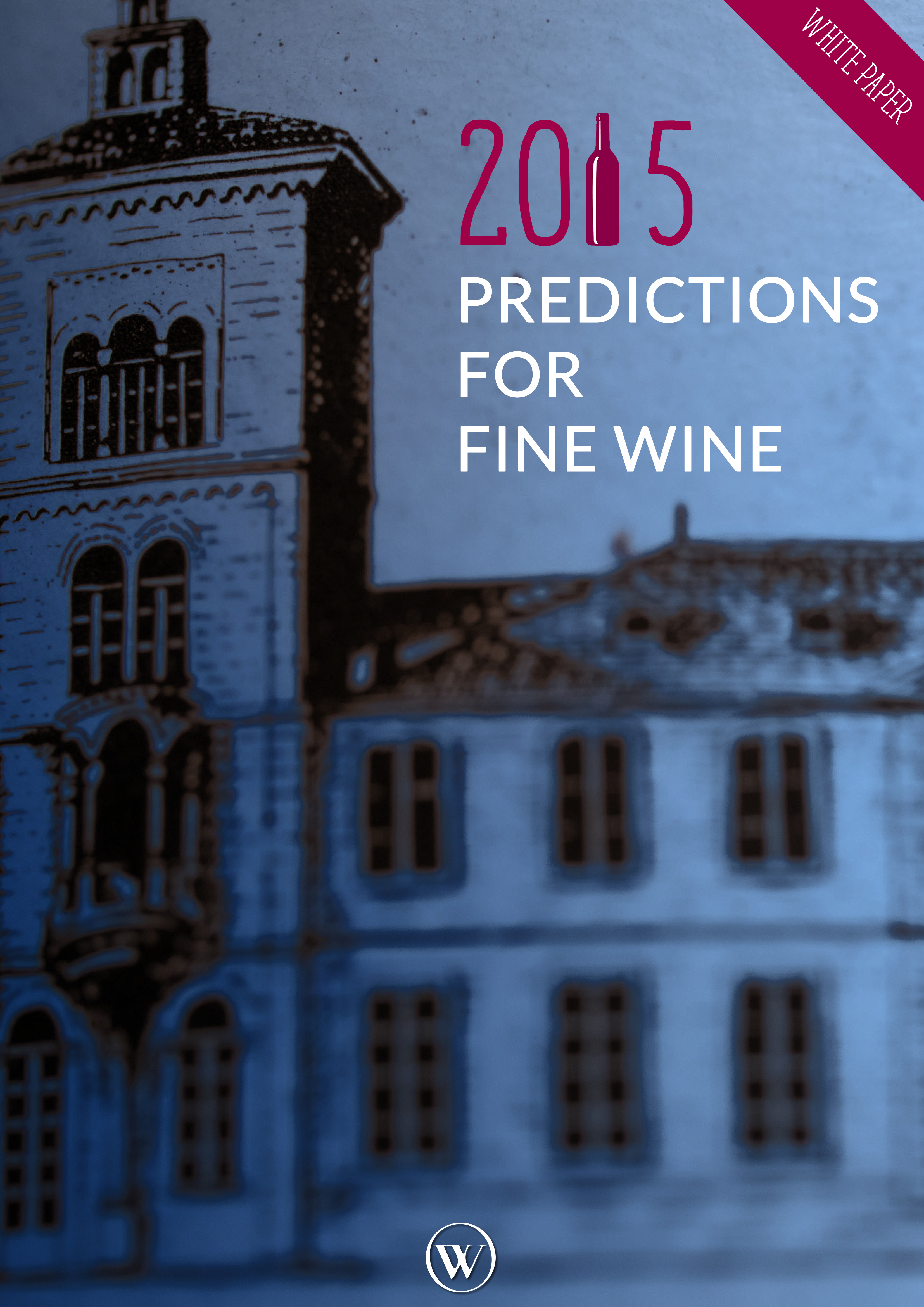by Wine Owners
Posted on 2019-02-04
As a couple of recent posts have alluded to, we think some of the really top end Burgundy has reached heights that might not be sustainable in the short to medium term. Over the last decade or so the Burgundy market has been the star performer:
But in the last year it has gone into interstellar overdrive:
Obviously Burgundy, and particularly the greatest names, are in short supply and the desire to have a slice of the action has had a dramatic impact on prices. But can this continue - THAT is the question!? This commentator has already sold some of the spectacularly performing big names and is reallocating the assets lower down the ladder, especially where prices are yet to move.
Last week we compared values of Clos de Beze 2010 from the Domaines of Rousseau, (Bruno) Clair and Drouhin-Laroze, all very closely rated, to find their respective price ratios to be 1 Rousseau for 13 Clair for 28 Drouhin-Laroze. This highlights the incredible disparity between certain growers and of course there will always be premia for certain names. However, the gaps have widened and some of the differentials are unjustified - opportunities abound, inter Burgundy and elsewhere. This quick comparison of a few random names suggests the currently less fashionable 1st Growth Bordeaux and even serious Rhone could be worth a look:
Please get in touch if you would like to discuss the Burgundian Conundrium and see if we can make sense of it!?
by Wine Owners
Posted on 2017-12-21
Broadening interest
2017 was a fascinating year for the wine market: a year of solid growth, consolidation and even a flash of speculation!
It was also a year of broader consumer interest reignited.
Knight Frank’s global Wealth Report includes analysis of the fine wine market provided by Wine Owners. Wine was by far the best-performing collectible asset of 2016,
up 24%. As a result, lots of positive press in 2017 brought plenty of new interest into the market.
Health
After the sharp price increases of 2016, when the Bordeaux market leapt as it rebounded off its 2014 lows following a couple of years of ticking up, 2017 was always going to be a less dramatic year for the classified and blue chip Bordeaux market.
It was encouraging to see a successful 2016 en primeur campaign that saw generally modest increases over 2015 in Euros, even if increases were more substantial for UK buyers due to the weakened currency. Overall gains in 2017 were low single-digit for
First Growths (after the 30% readjustment seen in the previous year). Other Classified growths and Right Banks rose an average of 7%.
Such moderation was less evident in the primary or secondary Burgundy market, the latter up 14.5%. What happens next is anyone’s guess, but the top of the market is holding onto 5-year gains of 100%, thanks in part to enduring Asian interest.
Hard luck stories
Burgundy was really hard hit by frosts in 2016. It’s a super vintage, but with many producer cellars that are 2/3rds empty. Only Vosne-Romanée and parts of Morey-St.-Denis and Gevrey-Chambertin escaped the April ‘gel’. Pretty much everywhere else was
heavily hit. The night-time freeze hit the Grand Crus and vineyards high up, the morning sun burned the buds of other premier crus and villages plots.
That big reduction in volume does add something to the intensity of the reds most noticeably. They are balanced, intensely redcurrant or blackcurrant in character, saline and fresh, with a vein of blood orange pulsing through them. The whites are fine
but don’t quite have the extraordinary rich, bright core of the 2014s, although in their favour the whites show more site specific character at this very early stage.
In 2017 Burgundy narrowly missed a second successive year of April misery, with an abundant vintage of good quality. Instead, Bordeaux was badly affected by freezing night-time temperatures in the last week of April, after a warm spring had encouraged
early growth. Some areas on the Right Bank, Graves and parts of the Medoc away from the warming waters of the Gironde were devastated. Chateaux de Fieuzel in Pessac isn’t making any wine in 2017.
What that will do to en primeur pricing next year remains to be seen, but widespread rises are on the cards, probably even those properties who emerged unscathed.
Notable winning regions
Champagne extended its run with top back vintages (where relative scarcity starts to play) racing ahead, up 13% in 2017. The world’s appetite for Champagne remains insatiable.
It was gratifying to see Northern Italy in rude health, with interest for Barolo Crus broadening significantly and prices of the best producers very sharply up this year on the back of a string of good vintages culminating in the highly sought after 2013s.
Speculation
Talking of that flash of speculation, Margaux 2015 announced in November that Margaux would release their 2015 as a special edition in honour of Paul Pontallier, the managing director of the estate who died in March 2016.
We saw the first release from the chateau, offered in individual single wooden cases, at a significant premium to the release price.
Based on the Chateau’s announcement, we saw speculative trading in the wine between EP club members rise and rise, with bids climbing from under £6,000 to £12,000, representing more than a 130% increase compared to the release price to UK consumers of
£4,650.
The limited edition black bottles with a variation on the classic Margaux label in gold invited comparison with the 2000 Mouton Rothschild, which attracts a significant market following based on collectability, despite not being in the top flight of Mouton
vintages or even one of the best wines of the vintage.
Looking ahead to 2018
If you're interested to learn more about the health of the fine wine market and are interested in our predictions for 2018, you can now download our Fine Wine Predictions 2018 report, a must-read for collectors, wine lovers looking for value, and investors searching for opportunities.
DOWNLOAD PREDICTIONS 2018 REPORT
* * *
We wish you all a very enjoyable festive season, and much vinous pleasure as you open great wine bottles to celebrate and see in 2018.
Best wishes for health and happiness from the Wine Owners team!

by Wine Owners
Posted on 2014-12-17
Anticipating buying opportunities
The subdued state of the Bordeaux market offers buying opportunities, such as First Growths from 1996 and right bank wines from 1998 – superb vintages that are coming into an early stage of their long maturity phase. Because of this demand ought to pick up. 1996 in particular looks fair value following declines of 40%, with the exception of Lafite which still commands a premium.
Volatility creates buying opportunities in any market, and wine is no different. When sentiment is negative, markets will tend to overshoot as they readjust. In wine, the very greatest vintages, comprising wines that are most susceptible to high prices at release, are often those that are sold off the hardest.
One such vintage that has been sold down over the last 3 years and yet which is one of the ‘greats’ is 2005. Whether the market has yet hit bottom is hard to judge. What is sure is that 2005 is the next great vintage following 1996 and 2000 that has a huge drinking window.
2005 may have been under-rated by key critics relative to 2009/2010. The likelihood of this vintage seeing improved ratings is greater than a downside, and any broad-based re-rating of them as they start to show their true class will spur price rises. Spring 2015 could well be the turning point for this vintage.
Back vintages of right bank Bordeaux have started to pick up, with the top of the market leading the way. This may have a positive effect on the peer group of right bank, merlot-dominated top wines. Typically production volumes are much lower than the big Medoc (left bank) estates, and scarcity exerts a greater influence on market pricing of older vintages.
This is an extract of our report 2015 FINE WINE PREDICTIONS

by Wine Owners
Posted on 2014-12-15
Bordeaux re-evaluated
Bordeaux’s steady decline from its broad-based peak in the summer of 2011 has led investors to reappraise the role of red Bordeaux, and especially the First Growths within their portfolio.
Whereas before 2010/11 top red Bordeaux might have accounted for 90-95%+ of all wine investments, these days diversification is seen by many as much more important as a hedge against volatility.
Market watchers now see buying opportunities on the back of 4-5 year lows and expect the Bordeaux market to move up in the next year. This is a likely scenario in respect of Classed Growth Bordeaux from the best years and First Growths from the lesser years, barring near-term risks posed by economic and geo-political externalities.
Sentiment towards Bordeaux will improve as prices bottom out. From 2008 onwards many new participants entered a frothy market. Several have now exited (e.g. Wine Networks owned by a Korean Telco) and many of the cold-calling wine investment companies that profited from a fast-rising market have gone bust – all of which have caused price falls to accelerate as stock was dumped. This unwinding has been necessary and essential for the market to resume normal functioning.
Looking ahead, prices of back vintages will start to firm up as channel inventories need to be refilled and as consumer confidence slowly rebuilds. Calling the bottom of a market is notoriously problematic, but back vintages are looking more interesting, right now, than at any time in the last 5 years.
Futures market in the balance
The new Bordeaux release of the 2013 vintage was the damp squib that everyone predicted and confirmed that the en primeur (futures) market is moribund.
Looking forward, 2014 is promised as a good to excellent vintage that would normally see prices rise. This time around it will need to be different: a moment of truth for the en primeur system.
As long as top wines are favourably priced at a discount to 2013 releases, en primeur may spring back into life, and the rest of the secondary market will be given further impetus. To this end a strong dollar will help.
The question is whether Chateaux still value the role the consumer plays as stockholder or whether that role is being taken for granted. There are only two reasons to buy young wine before it is bottled: either because it will be difficult to find in the future or because it’s better value to buy early. For Medocs and Graves, scarcity isn’t an issue, so it has to be much cheaper than when it is available in bottle for consumers to buy en primeur.
This is an extract of our report 2015 FINE WINE PREDICTIONS


